Drum mixing is a super important music production process that requires precision and attention to detail.
It involves balancing levels, shaping tones with EQ, and manipulating dynamics with compression and effects.
However, as a producer, when you know how to mix drums properly, it can completely transform the quality of your music.
It will bring unmatched clarity, punch, and excitement to your tracks.
Plus, make your drum sounds stand out in a mix 一 ensuring they complement the other instruments present.
That’s why we’re breaking down everything you need to know about mixing drums, so you can enhance your skills and knock out killer drums.
We’ll cover essential topics like:
- Setting up your drum mix ✓
- Building your kick drum sound ✓
- Snare drum techniques ✓
- Hi-hat and cymbal mixing ✓
- EQ strategies for drums ✓
- Managing low frequencies ✓
- Mastering drum dynamics ✓
- Compression settings ✓
- Parallel compression & multiband compression ✓
- Drum bus processing ✓
- Creative use of effects ✓
- How to avoid things that can ruin your entire mix ✓
- Recording drums live (bonus) ✓
- Much more about how to mix drums ✓
This way, you’ll know how to mix drums like an absolute pro so your tracks have the power and presence to stand out.
Plus, be able to create mixes that are dynamic and engaging, unlocking the secrets to professional-grade drum sounds.
So, let’s dive in to this step-by-step guide to mixing drums…
Table of Contents
- How to Mix Drums & Why it Matters
- Setting Up Your Drum Mix: The Essentials When You Start Mixing Drums
- Building Your Kick Drum Sound
- Snare Drum Techniques
- Hi-Hats and Cymbals
- Mastering Drum Dynamics (Key When Mixing Drums)
- Creative Use of Effects
- How To Mix Drums Bonus: For Those Recording Drums Live
- How to Mix Drums: Final Thoughts
How to Mix Drums & Why it Matters
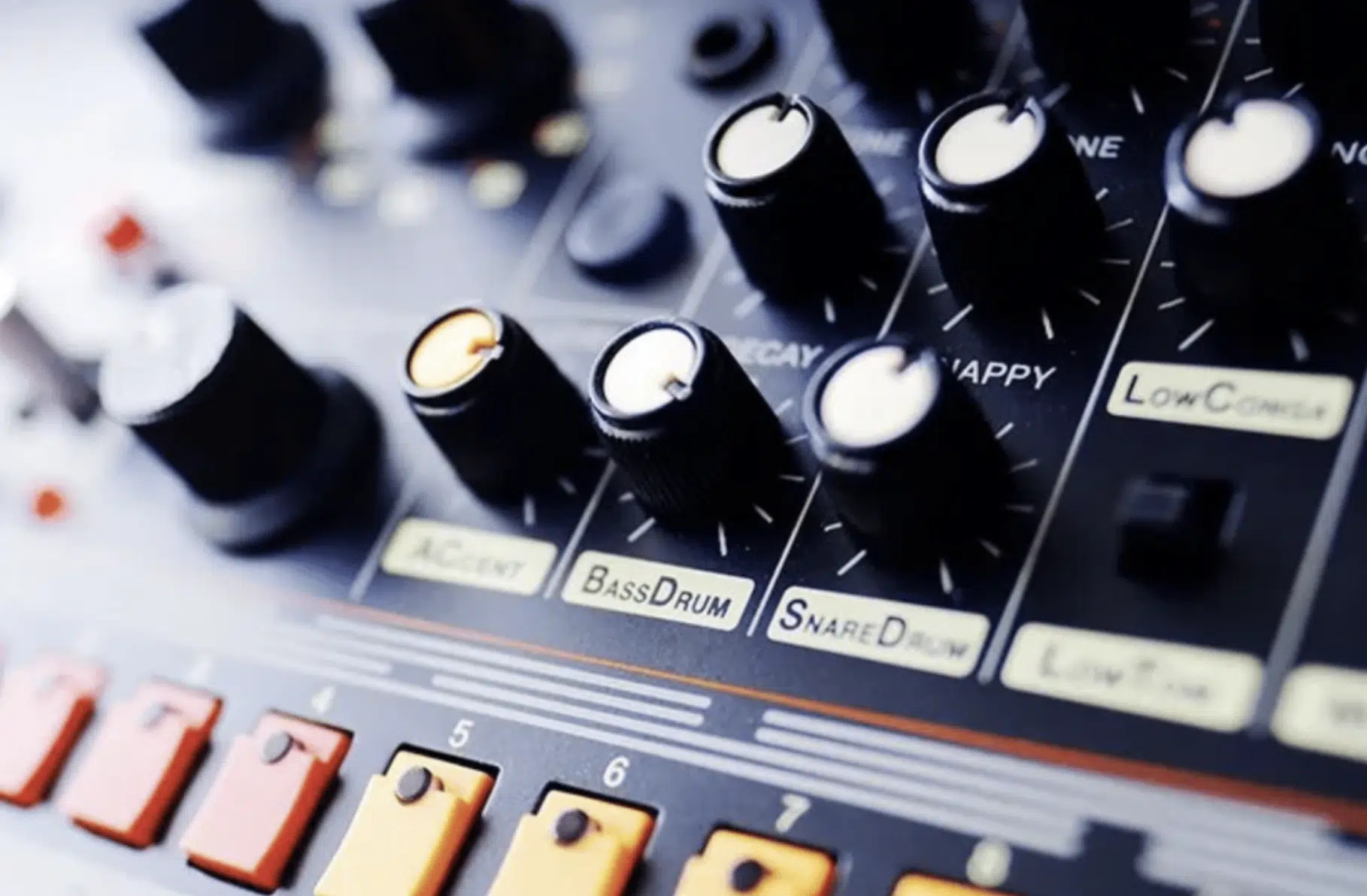
Learning how to mix drums correctly is non-negotiable if you’re trying to be a professional producer.
It sets the entire tone and feel of your track.
When you mix drums correctly, every part of the drum kit (like the booming kick drum or the sharp snare) fits perfectly and doesn’t clash.
This will help create a solid foundation for all the other instruments.
For example, getting the balance right between the kick drum and bass is crucial:
- If the kick drum is too loud 一 It might overpower the bass altogether.
- If it’s too soft 一 The rhythm might feel weak and super basic.
The way you mix your drums also affects how the song feels, so a snare that’s mixed to sound crisp and clear can make your song feel more energetic.
Similarly, well-mixed hi-hats can add a lot of rhythm and texture to a song, making even a simple beat feel more complex and interesting.
That’s why knowing how to mix drums properly is a big deal for producers like you and I.
It’s not just about making sure each drum sounds good on its own, but rather about making all the drums work together to enhance your whole track (which is everything).
Basically, a good drum mix doesn’t just support the music…
It enhances everything from the groove to the mood 一 helping turn an ‘okay’ track into one that screams professional and flawless.
Don’t worry, we’ll break down, in detail, everything you need to know about how to mix drums in the following sections.
Setting Up Your Drum Mix: The Essentials When You Start Mixing Drums

When you’re learning how to mix drums, it’s all about building a solid foundation.
You’re going to start with the basics: selecting high-quality drum samples/drum sounds that fit the genre you’re working with (hip-hop, techno, etc.) and match your style.
A well-chosen kick drum and snare can be the difference between a track that pops and one that falls flat on its face.
Your initial setup should involve basic panning…
So, this means placing the kick and snare in the middle for power and balance and making sure the hi-hats and cymbals are slightly panned.
This will help you mimic a natural drum kit’s stereo width spread.
Leveling comes next, and it all starts with the kick drum to ensure it has enough presence without overpowering anything.
Gradually bring in the snare, then the hi-hats, and cymbals 一 adjusting their volumes to make sure your drum mix is balanced and on point.
Remember, the goal is creating a clean mix where each drum track is clear and distinct (to cut through the mix without muddiness or frequency overlap).
Building Your Kick Drum Sound
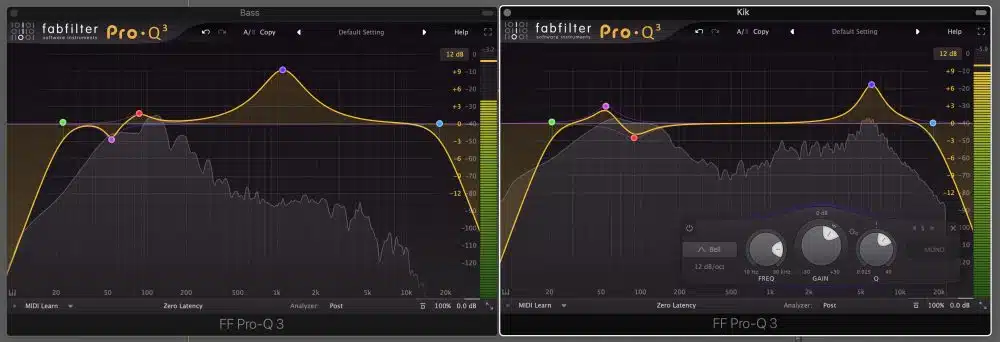
Your kick drum will bring that drive and rhythm to your tracks, so you’ll need to make sure your kick hits all boxes.
To build a powerful kick drum sound, start by applying a high-pass filter to eliminate any low-end rumble that isn’t needed, which cleans up the mix and makes room for the bass.
Then, focus on the EQ… Boost around 60-100 Hz for warmth and cut slightly around 300-400 Hz to reduce muddiness.
If the kick lacks punch, a slight boost around 3-5 kHz can enhance its beater click.
Compression is next 一 use a compressor with a slow attack (around 30 ms) to let the initial transient through and a quick release (around 50 ms) to maintain energy.
This technique helps the kick drum to remain dynamic and powerful.
For an advanced tip when you’re learning how to mix drums, try layering different kick samples to add depth and character.
For example, blending a synthetic sub-heavy kick with an acoustic kick can give you both the low-end push and the organic feel (vital for genres like hip-hop or EDM).
Snare Drum Techniques
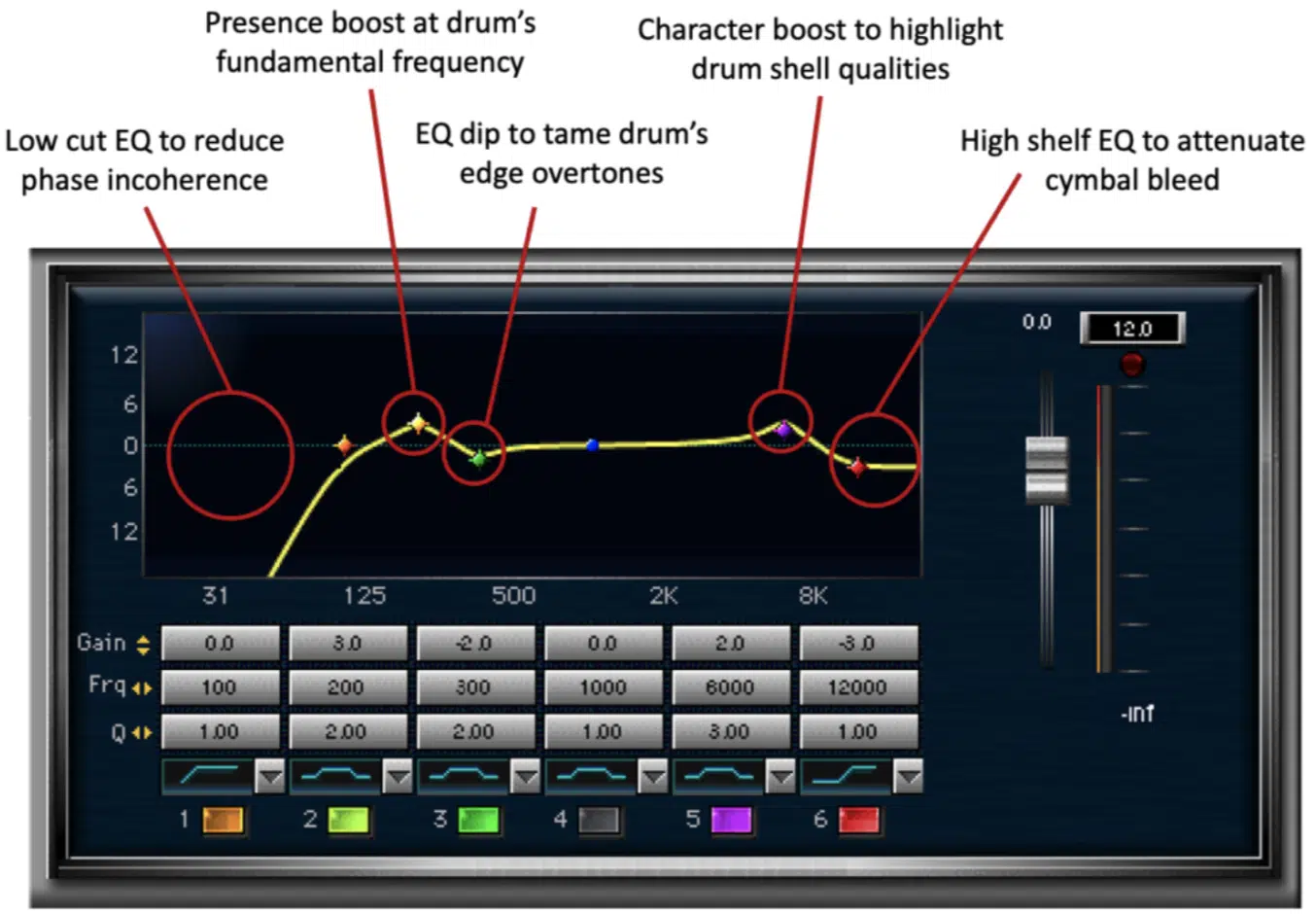
The snare drum, often the focal point of a drum kit, requires careful attention to detail when you’re mixing.
Start with EQ by:
- Boosting at 200 Hz for body.
- Cutting a little at 600 Hz to remove boxiness.
A high shelf boost around 8 kHz can add crispness to the snare’s snap.
To deal with a basic, boring snare, try layering a clap or a rim shot slightly offset behind the main snare hit 一 enhancing the initial transient and adding a unique texture.
Dynamic processing on the snare is just as important.
A noise gate can help eliminate unwanted drum bleed from other drums, especially if your mix is super dense.
Apply compression with a medium attack and release (attack = around 15-20 ms and release = around 100 ms).
It will enhance the natural dynamics while keeping the snare punchy and prominent.
Layering a subtle clap or rimshot, slightly delayed, can also add a unique edge and reinforce the snare’s attack in the mix.
NOTE: Noise gates silence background noise and unwanted sounds by allowing only audio signals louder than a set threshold to pass through.
You’ll need to know all about what a noise gate does when you’re learning how to mix drums like a true professional.
Hi-Hats and Cymbals
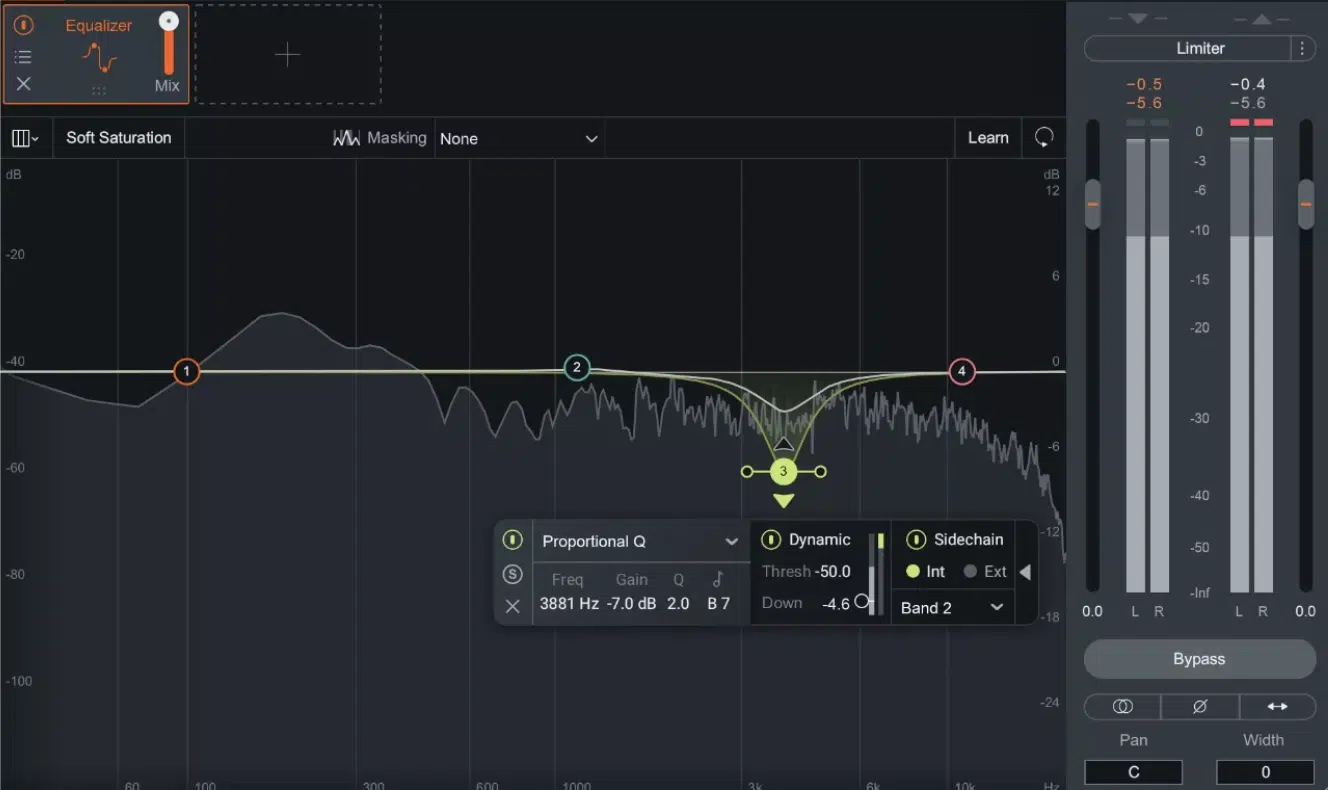
Hi-hats and cymbals, as we touched upon, can contribute to the groove and energy of your track in a major way.
Make sure to start with a high-pass filter at around 200 Hz to ensure clarity and remove any low-frequency clutter.
EQ adjustments should include a:
- Boost around 10 kHz to bring out the sizzle of hi-hats
- A gentle cut in the mid-frequencies (around 400-500 Hz) to reduce harshness
Panning plays a key role in creating a realistic drum sound as well.
When you pan drums, remember to pan hi-hats slightly to the left or right depending on the drummer’s perspective, and spread out cymbals across the stereo field.
This will mimic a natural drum set/drum recordings.
Applying light compression with a fast attack (about 5-10 ms) and a quick release (about 30-50 ms) can keep the dynamics controlled while maintaining their natural feel.
Play around with subtle reverb or a short delay (below 30 ms) to add depth without overwhelming the drum mix.
Mastering Drum Dynamics (Key When Mixing Drums)
Mastering drum dynamics involves a careful balance of intensity and subtlety, ensuring each drum hit perfectly contributes to the overall sound. This lays the foundation for advanced dynamic control techniques, from basic compression settings to more nuanced approaches like parallel and multiband compression.
-
Drum EQ Techniques
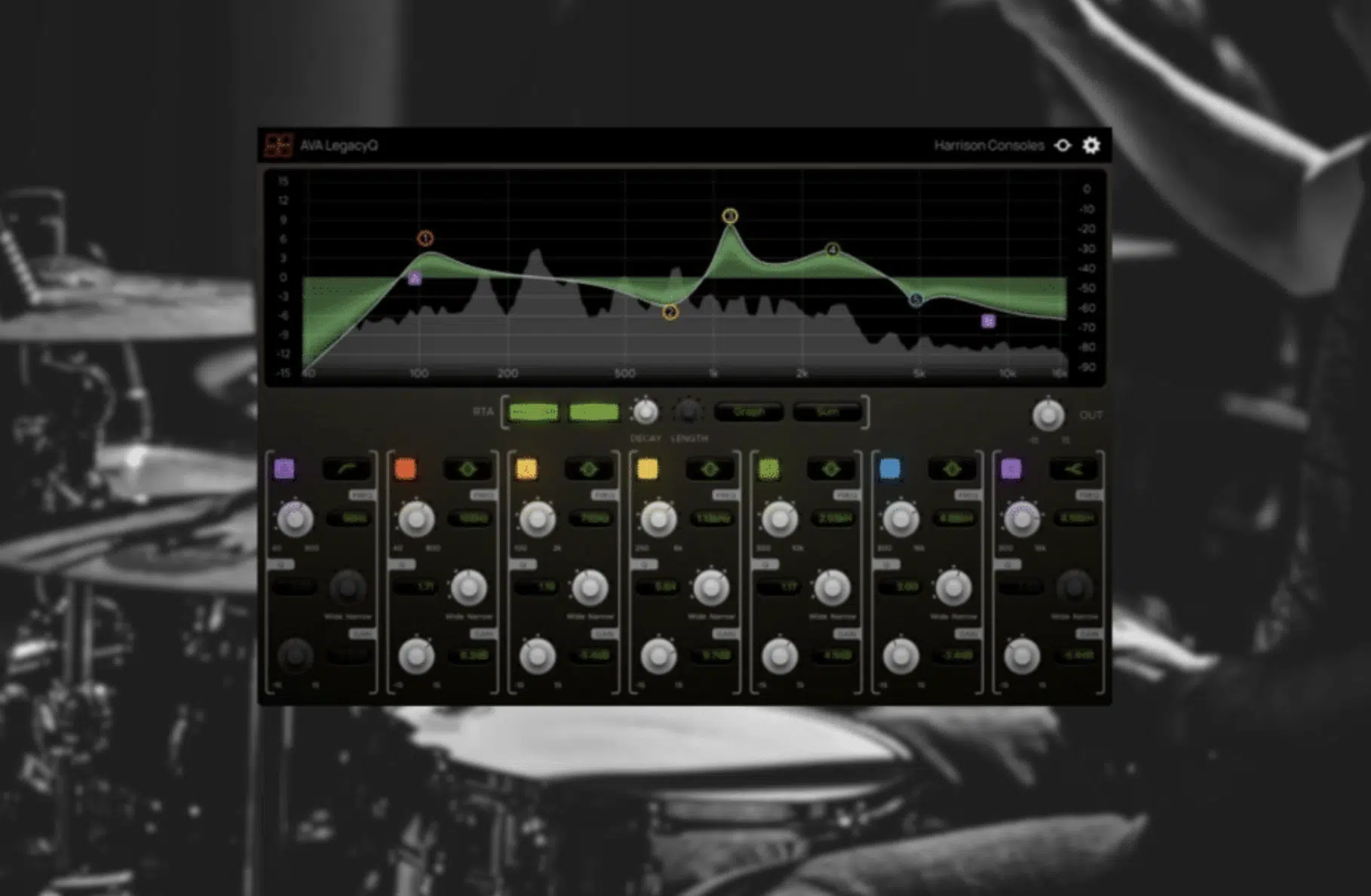
When you want to learn how to mix drums that are clear, powerful, and professional, drum EQ is key.
So, start by identifying and cutting any unnecessary frequencies that could be cluttering your drum sounds.
For example, a high-pass filter on your drum tracks can eliminate low-end rumble 一 ensuring that your kick drums and basslines have room to breathe.
Similarly, a low-pass filter might be used on certain elements to reduce harsh high frequencies.
Remember when you’re learning how to mix drums and enhance drum sounds, focus on their fundamental frequencies.
For snare drums, this might mean boosting around 200 Hz to emphasize body, or cutting around 1 kHz to reduce harshness.
NOTE: For toms, boosting around 100 Hz can add warmth, while cutting around 250 Hz can reduce muddiness.
Each drum element has its unique EQ needs based on the role it plays in your mix, so take the time to EQ each drum track individually for the best results.
-
Compression Basics: Attack, Release, Threshold
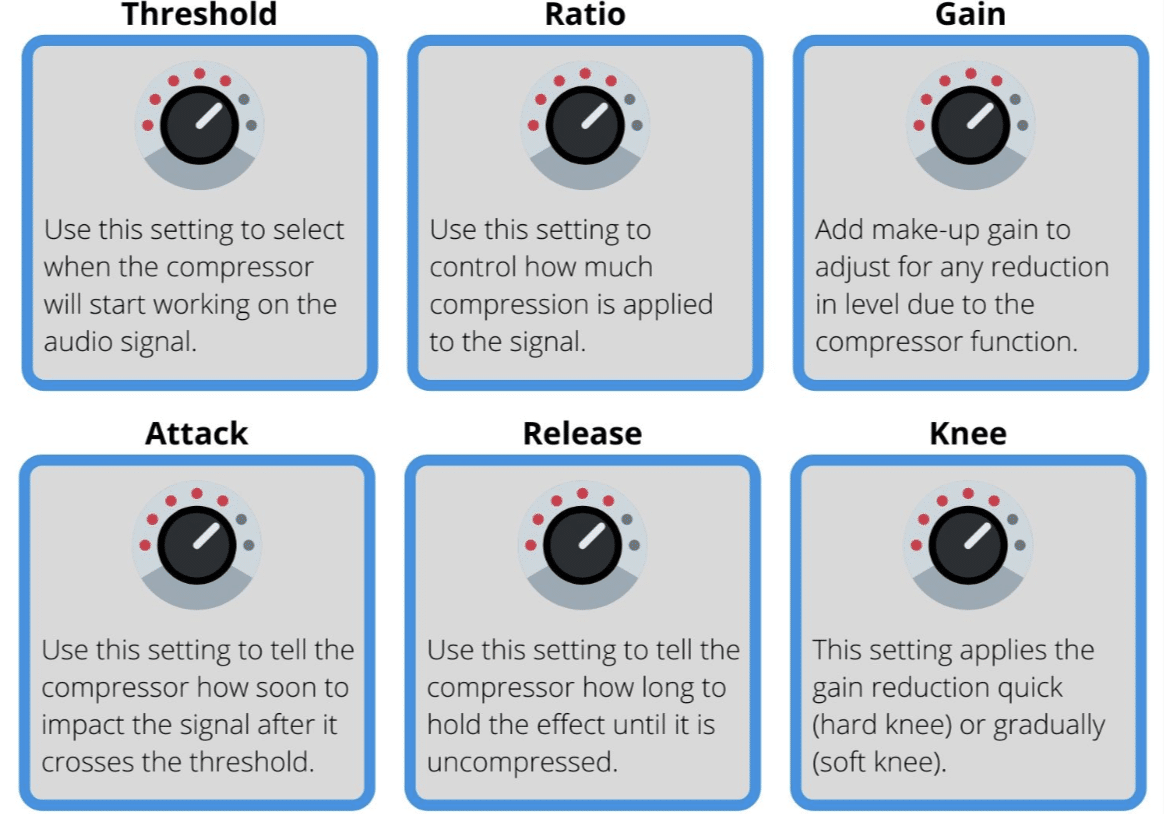
Compression is all about managing the dynamics of your drum tracks, especially the punch and body of your drum hits.
Setting the attack time right is key…
The slowest attack time allows the initial transient of the drum hit, like the sharp attack of a snare drum or the initial thump of a kick snare, to pass through before compression begins 一 preserving the natural punchiness.
On the other hand, a faster release time can enhance the perceived loudness and energy of the drum, by quickly resetting the compressor between hits.
The threshold setting determines at what level compression will start to engage.
Setting this correctly ensures that only the desired parts of the drum signal are affected, avoiding over-compression which can lead to a lifeless sound.
For drums, experimenting with different ratios and knee settings also brings various sonic benefits to the table.
A higher ratio with a soft knee on a snare drum can tame aggressive hits while maintaining energy.
NOTE: This is perfect for rock drums or EDM where a dominant snare is everything.
Adjusting the threshold so that it only engages during the loudest parts can help in maintaining dynamic range while still controlling peaks.
This is essential for a balanced drum mix that both feels dynamic and sounds cohesive in the context of the entire track.
-
Using Parallel Compression for Power
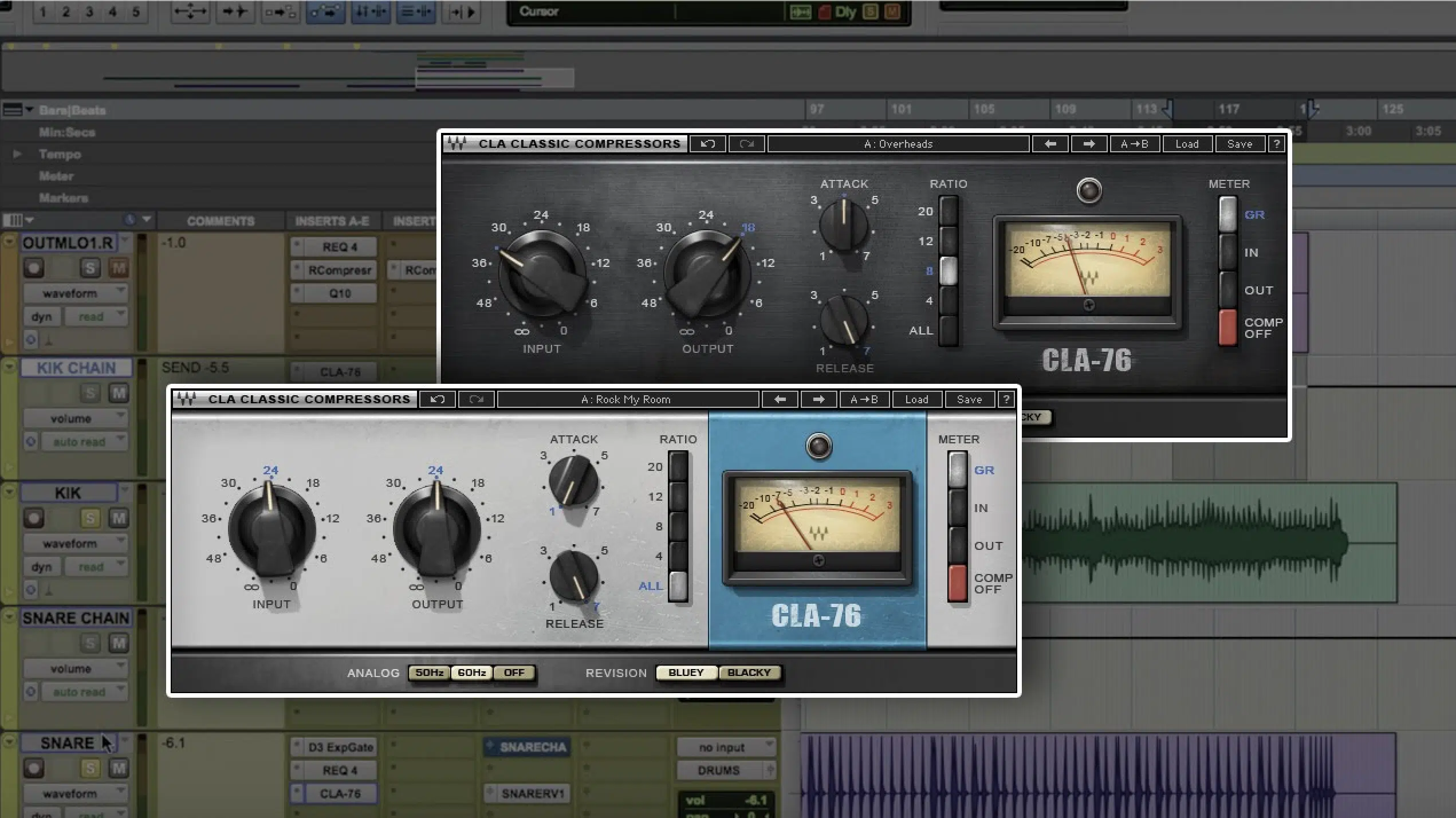
Parallel compression is a powerful technique for enhancing the overall impact of drums without sacrificing their natural dynamics.
If you’re learning how to mix drums that knock, this one is great.
By mixing a heavily compressed version of your drum tracks with the uncompressed original, you can add major body/presence to the sound.
Start by sending your drum tracks to a bus and apply aggressive compression:
- High ratio
- Fast attack
- Low threshold
This squashes the dynamics drastically, which might sound too aggressive alone.
However, when you blend this processed signal back with the original, you achieve a powerful, full sound that retains the dynamic feel of the drums.
It’s super effective for genres like rock and hip-hop where punchy, prominent drums are the true stars.
-
Multiband Compression for Drums
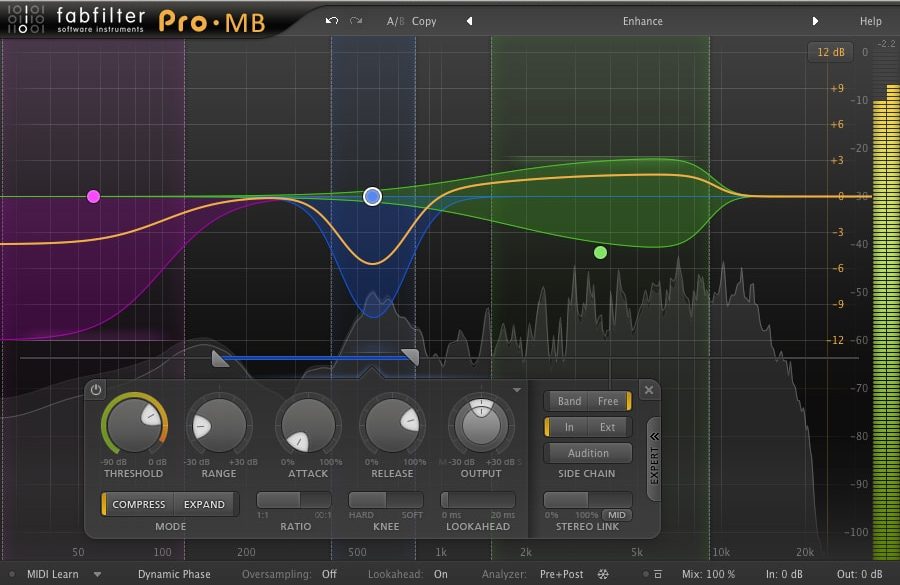
Multiband compression offers targeted dynamic control so you can compress specific frequency ranges independently.
This is particularly useful for drum mixes where different elements of the drum kit occupy various parts of the frequency spectrum.
For example, you might apply compression only to the low frequencies of the kick drum to tighten up the low-end while leaving the mid and high frequencies more dynamic.
On the other hand, applying compression to the high frequencies of cymbals can control harshness and maintain a smoother presence in the mix.
This technique helps in achieving a balanced drum sound that is powerful yet not overwhelming, essential for complex mixes in modern music.
And to help you learn how to mix drums with some edge, of course.
-
Drum Bus Processing for Cohesion
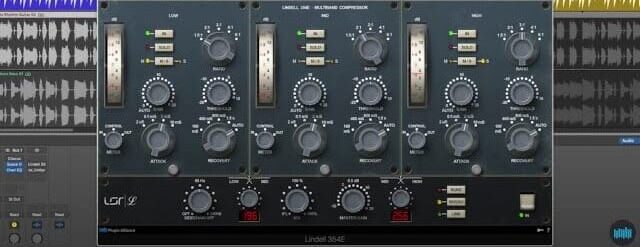
When you’re mixing drums, or learning how to mix drums for the first time, you have to consider drum bus processing.
Drum bus compression, for example, is about gluing all the drum elements together to form a cohesive sound.
Start by selecting a fast-acting compressor that adds desirable character, such as an analog-modeled compressor for warmth.
Apply a moderate attack and release (medium) to let the transients cut through the mix while still smoothing out the overall dynamics.
NOTE: The key when you’re mixing drums is to set a threshold that engages the compression compressors subtly during the loudest element/parts of your track.
This technique subtly reduces dynamic range 一 making the drum mix have a more controlled sound (super useful for live band settings and digital production).
It will help your drum sounds sound more alive.
Experiment with the ratio and make-up gain to find the right balance that meshes well with your track’s overall dynamics (without overpowering it, of course).
-
Pro Tip: Balancing Drums with Bass and Melody
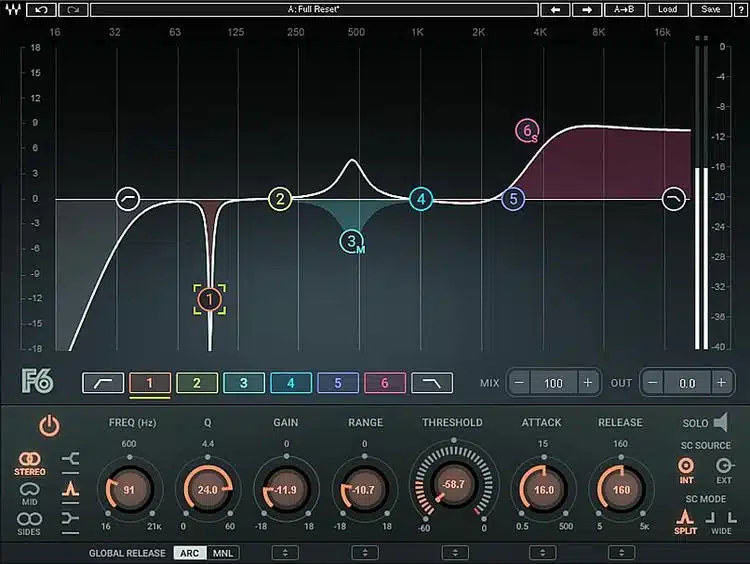
Getting that perfect, harmonious balance between drums, bass, and melody requires careful attention to frequency and dynamic interaction.
Use sidechain compression on the bass track triggered by the kick drum to create rhythmic cohesion and make sure that the kick cuts through.
Additionally, adjust the EQ on your drum buss to carve out space for key melodic elements, like low-mids to allow the clarity of keyboard or vocal lines.
This not only enhances the drums but supports the track as a whole 一 ensuring that all elements work together to produce a sick immersive listening experience.
Creative Use of Effects
When you’re learning how to mix drums like a pro, creative effects like reverb and delay can completely transform your tracks. Not only adding depth and space, but enhancing the groove and mood. Let’s dive into how these effects can be used effectively on drums so you can get to mixing drums like a champ.
-
Applying Reverb and Delay to Drums
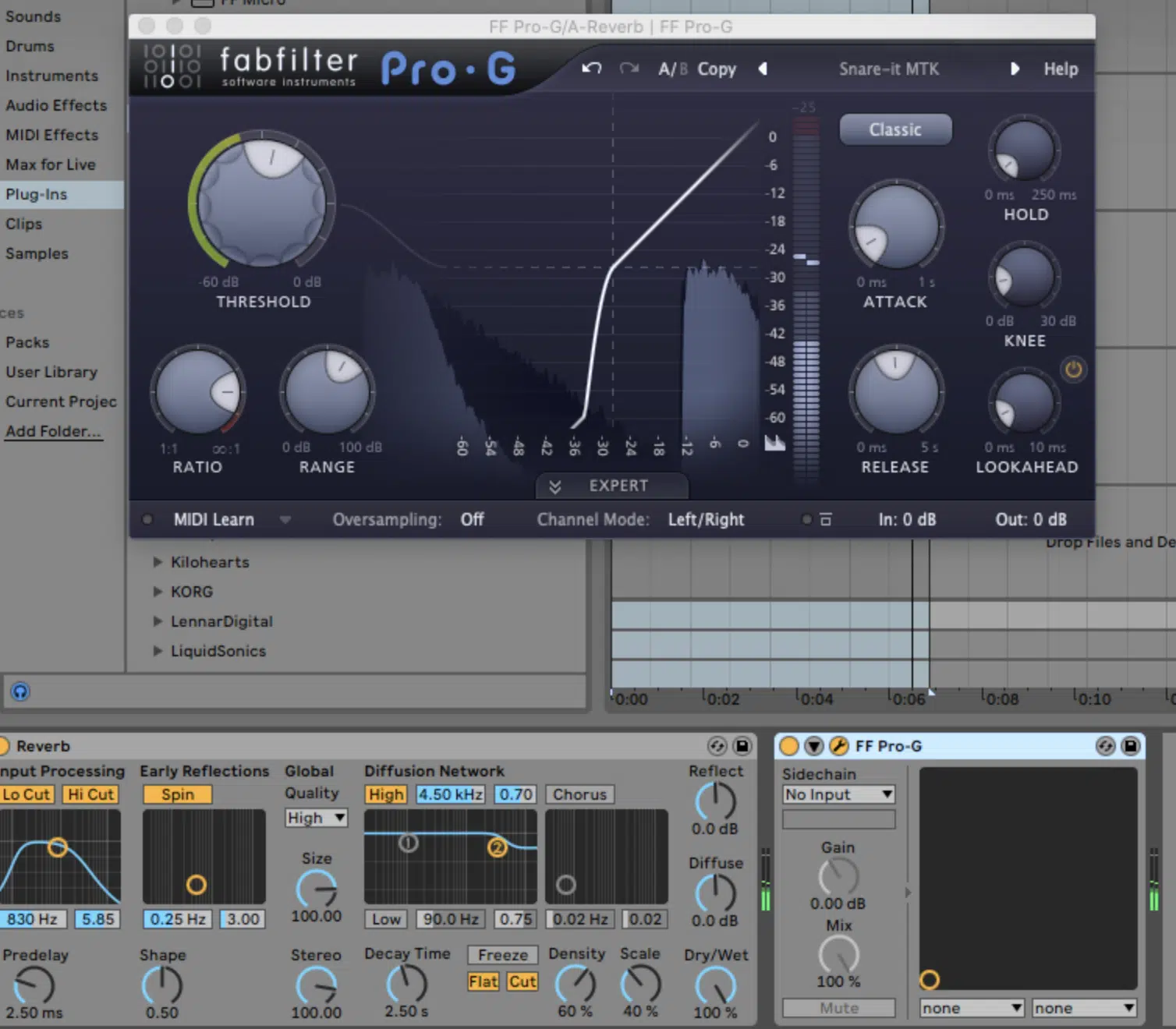
Reverb can give your drum sounds a sense of space and depth, so when applying reverb to drums, make sure to choose a type that matches your song’s style.
For example, a room reverb can add a subtle ambiance to snare drums, making them blend better within a mix.
On the flip side, a plate reverb can lend a shimmering decay to cymbals 一 enhancing their overall presence in your track.
It’s important to adjust your reverb plugin settings, whether it’s a hall reverb or anything else, like pre-delay, which can help maintain the clarity of the drum hits by delaying the onset of reverb.
Meaning, it will prevent the devestating destruction of certain transients (can you say washed out?).
Also, using a high-pass filter on the reverb return can prevent low frequencies from muddying up the mix, ensuring your kick drums remain tight and focused.
Delay can be used creatively on drums to enhance rhythm patterns or add texture.
For example, applying a ping-pong delay to snare hits in a sparse drum pattern can create a playful interaction between the beats, adding interest and movement.
Adjust the feedback and timing settings to keep the delay from overwhelming the main hits and complementing the rhythm subtly.
When you’re learning how to mix drums that fall under any EDM sub-genre, this one is key, because experimental sounds and complex rhythms are everything.
-
Using Saturation and Distortion Creatively
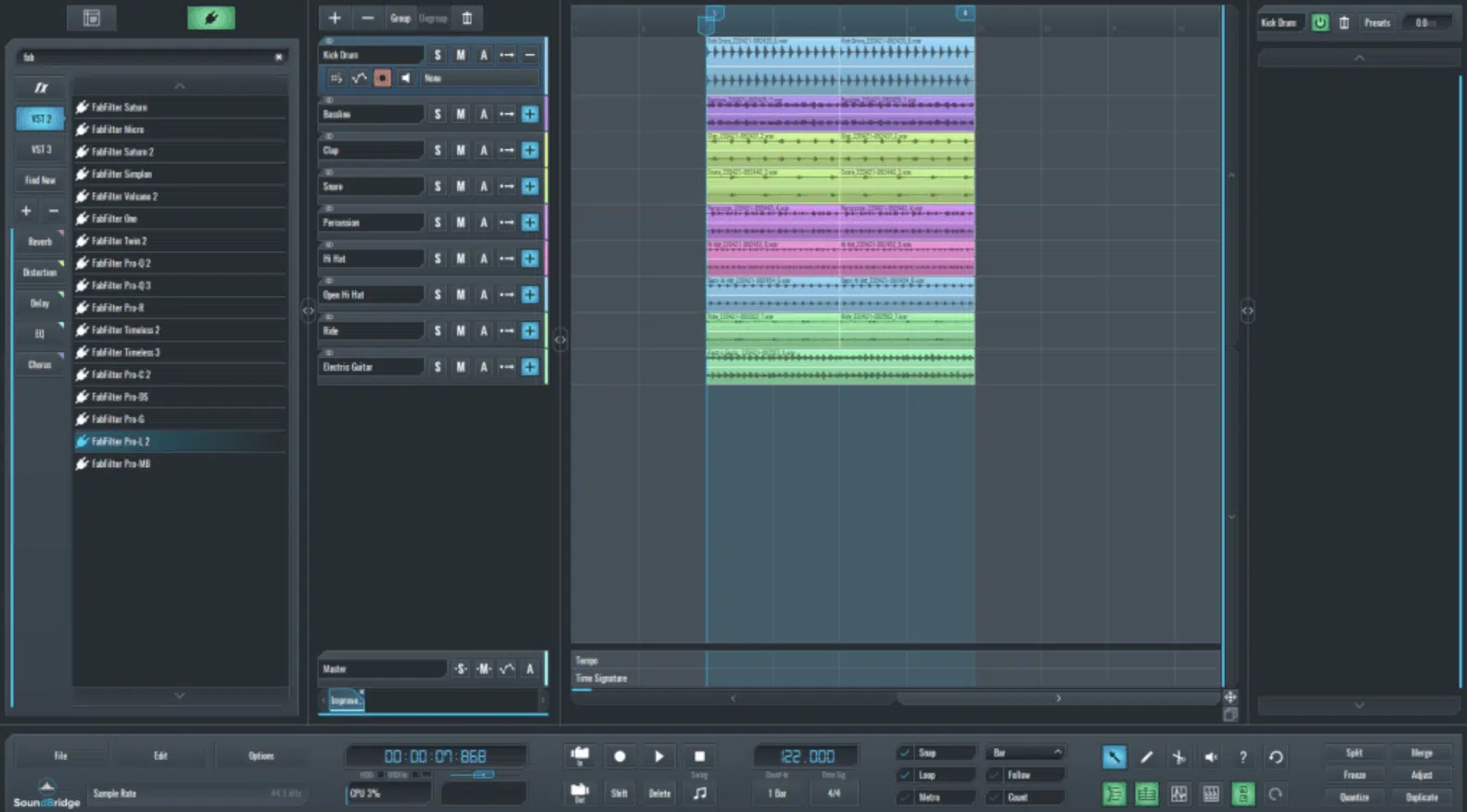
Saturation and distortion are not just for guitars… they can add a fantastic edge to drum tracks as well.
Applying light saturation to a kick drum can warm it up and make it feel more powerful without adding unwanted ‘boominess.’
For snares, a bit of tube distortion can enhance the upper harmonics 一 making the snare more prominent in the mix.
These effects are particularly useful in rock and metal genres, where aggressive drum sounds are essential.
NOTE: Experiment with different amounts of saturation on various drum elements to find the right balance that adds character without sacrificing clarity.
-
Pro Tip: Spatial Effects for Depth

When learning how to mix drums, playing around with spatial effects can significantly enhance the depth and dynamic response of your sound.
By using stereo imaging tools and subtle reverb, you can create balance within the mix, making the drums feel expansive without messing up other elements.
Make sure to listen carefully as you adjust the width and reverb settings 一 a little goes a long way when you’re adding dimension to your drums.
It will help ensure that each drum hit occupies its own distinct space, contributing to a fuller and more immersive sound.
How To Mix Drums Bonus: For Those Recording Drums Live
For those diving into the world of live drum recording, microphone selection and placement is number one. So, let’s break down how to make sure that every drum hit is perfect, starting with close mics, overhead, and room mics for controlled sound.
-
Mic Selection and Placement Strategies
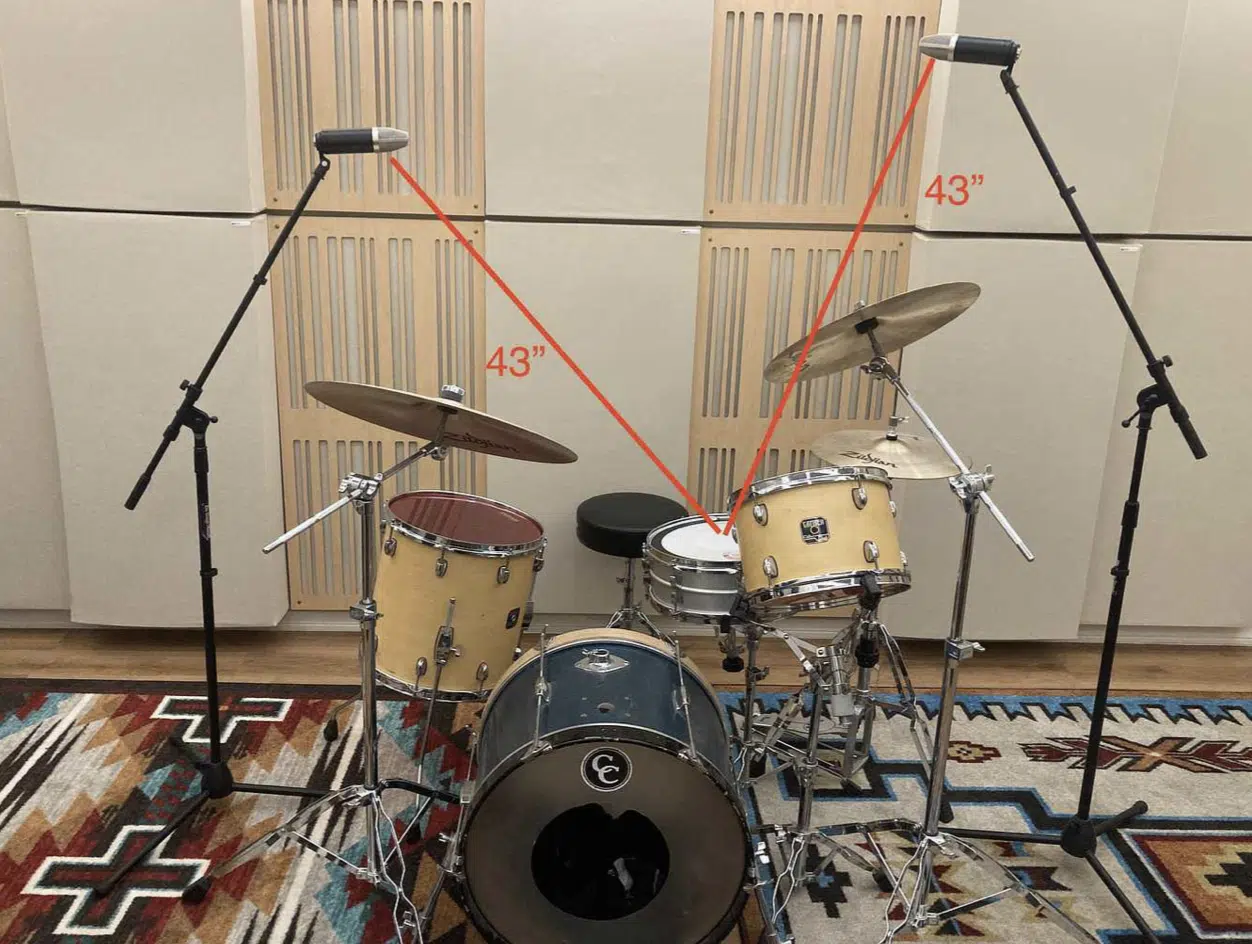
Selecting the right microphone (or multiple microphones) for each part of the entire kit will help you capture the best possible sound and natural tone variations.
For the kick drum, use a dynamic microphone like the AKG D112, positioned inside the drum channel facing the beater.
It will capture the punch and boom essential for a solid foundation.
For snare drums, a Shure SM57 placed at a 45-degree angle to the rim focuses on the crack while reducing hi-hat bleed.
Overhead mics should be condensers, such as the Neumann KM184s, configured in an XY pattern.
This will ensure phase coherency and capture the sparkle of cymbals and the overall kit dynamics as a whole, which is super important.
NOTE: If you want to know all about different mic types (like close mics, overhead mics, tom mics, etc.), we’ve got you covered.
-
Capturing the Perfect Drum Sound with Your Mics
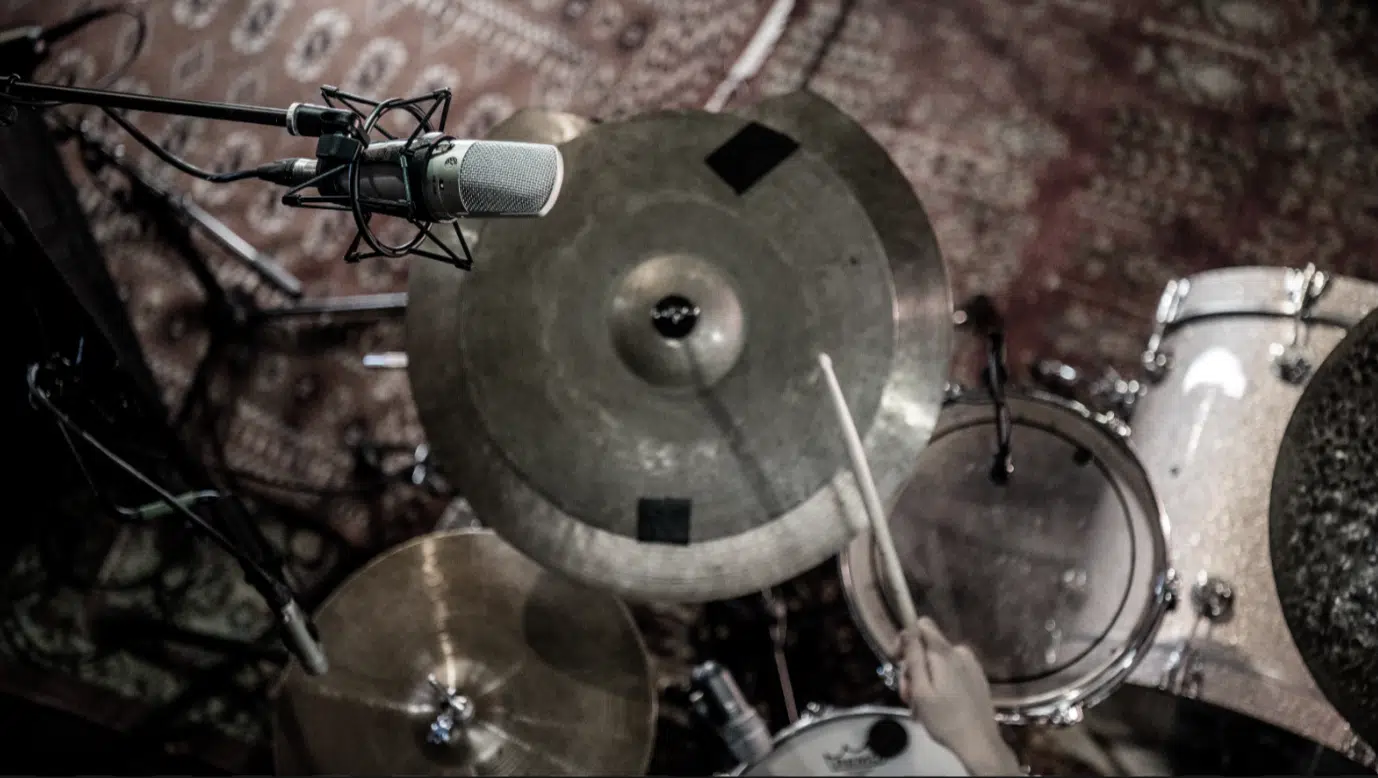
To truly capture the energy and dynamics of live drums, consider the acoustics of the recording environment (like a wooden recording studio or someone’s closet).
Room mics play a vital role in this aspect…
A pair of ribbon microphones, like the Royer R-121s, placed several feet away from the kit can add a natural reverb and ambience to your drum sound.
Make sure these are positioned strategically to avoid phase issues and to take advantage of the room’s sonic characteristics.
This, as you now know, can add depth and realism to your drum recordings.
NOTE: This production setup not only captures the raw intensity of the drums but also the atmospheric elements of the space for added authenticity and emotional impact.
How to Mix Drums: Final Thoughts
Learning how to mix drums, as you now know, is an indespensible skill in music production that requires precision, creativity, and a wicked ear for detail.
You have to balance the dynamics, tune the frequencies, and make sure each drum sound is positioned correctly in the stereo field.
This way, your tracks will be polished, powerful, and professional-sounding.
Incorporating the right techniques on how to mix drums can transform a good track into a great one 一 bringing out the best in every beat you knock out.
And, to really give you an unfair competitive edge, you’ve got to check out these highly-renowned (and completely free) Essential MIDI Drum Kits.
It contains 5 invaluable complete MIDI drum kits, so if we’re talking professional-sounding grooves, there is no better resource.
They’re the best way for you to instantly create perfect drum patterns and make your tracks seriously addictive.
And learn how to mix drums like the professionals in the process, of course.
With these tools and the knowledge on how to mix drums you have in this guide, you can now start mastering the art of drum mixing.
This way, your tracks will stand out and blow the competition away; but remember it’s all about balance, don’t forget that.
Until next time…







Leave a Reply
You must belogged in to post a comment.